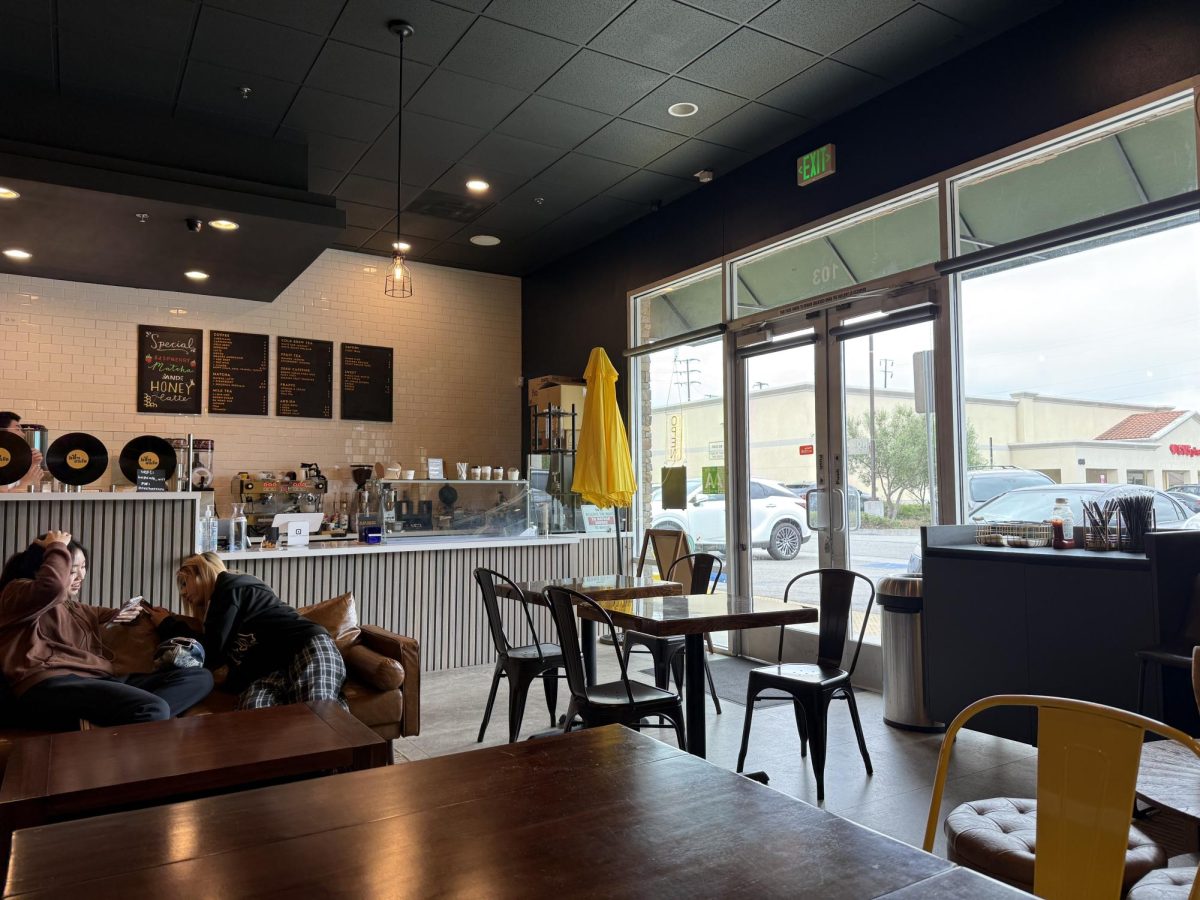Carrying their black filter glasses and telescopes, Arcadia High School (AHS) students gathered in front of the S-building to observe a rare event: total solar eclipse.
A solar eclipse occurs when the moon passes in between the Earth and the Sun, and there are many types of eclipses. A partial solar eclipse occurs when the Moon only covers a portion of the Sun. An annular eclipse occurs when the Moon covers the Sun but does not cover its edge. A total eclipse occurs when the Moon covers the Sun fully, leaving only its outermost corona layer exposed.
While solar eclipses are not rare astronomical events, the total solar eclipse that occurred on Apr. 8 is special because it could be seen across North America. After this total eclipse, the next one that will be visible in the U.S. will be over Alaska on Mar. 30, 2033. For the 48 contiguous states, the wait is even longer as the next total eclipse will occur on Aug. 23, 2044.
Due to the rarity of this event, this total eclipse was widely publicized by news outlets, and many had anticipated it. It was even dubbed as the “Great North American Eclipse.” Mrs. Yumiko Goto, who teaches AP Physics, learned of the eclipse in a more unusual manner.
“I knew about the solar eclipse in advance because an eclipse happened around one year before during my figure skating competition in Ohio. The outside was very dark,” said Mrs. Goto.
Because Arcadia lies outside the path of totality (line where a total solar eclipse can be observed), AHS students were not able to experience the darkness expected from a total solar eclipse.
“I thought it was anticlimactic, because I didn’t have the special glasses to see the eclipse with just my eyes. I did see a small moon, but it was on my phone,” said junior Aaron Fan.
Nevertheless, the event was noticeable due to the shape of the sun.
“We went outside during the class time, and it was very fascinating. Even though we didn’t have the special glasses, we were able to watch the shape of the sun,” said Mrs. Goto.
Some students were able to get a better look at the sun due to their special equipment.
“I borrowed my friend’s telescope and looked with my bare eyes at the sun. And I had the solar eclipse goggles with the black filters. I was able to use my phone and took a picture and it was good,” said senior Jason Liu.
Despite the unfavorable conditions to observe the total eclipse in Arcadia, AHS teachers and students still had a valuable experience in connecting the science they are learning in class to a real world phenomenon.







